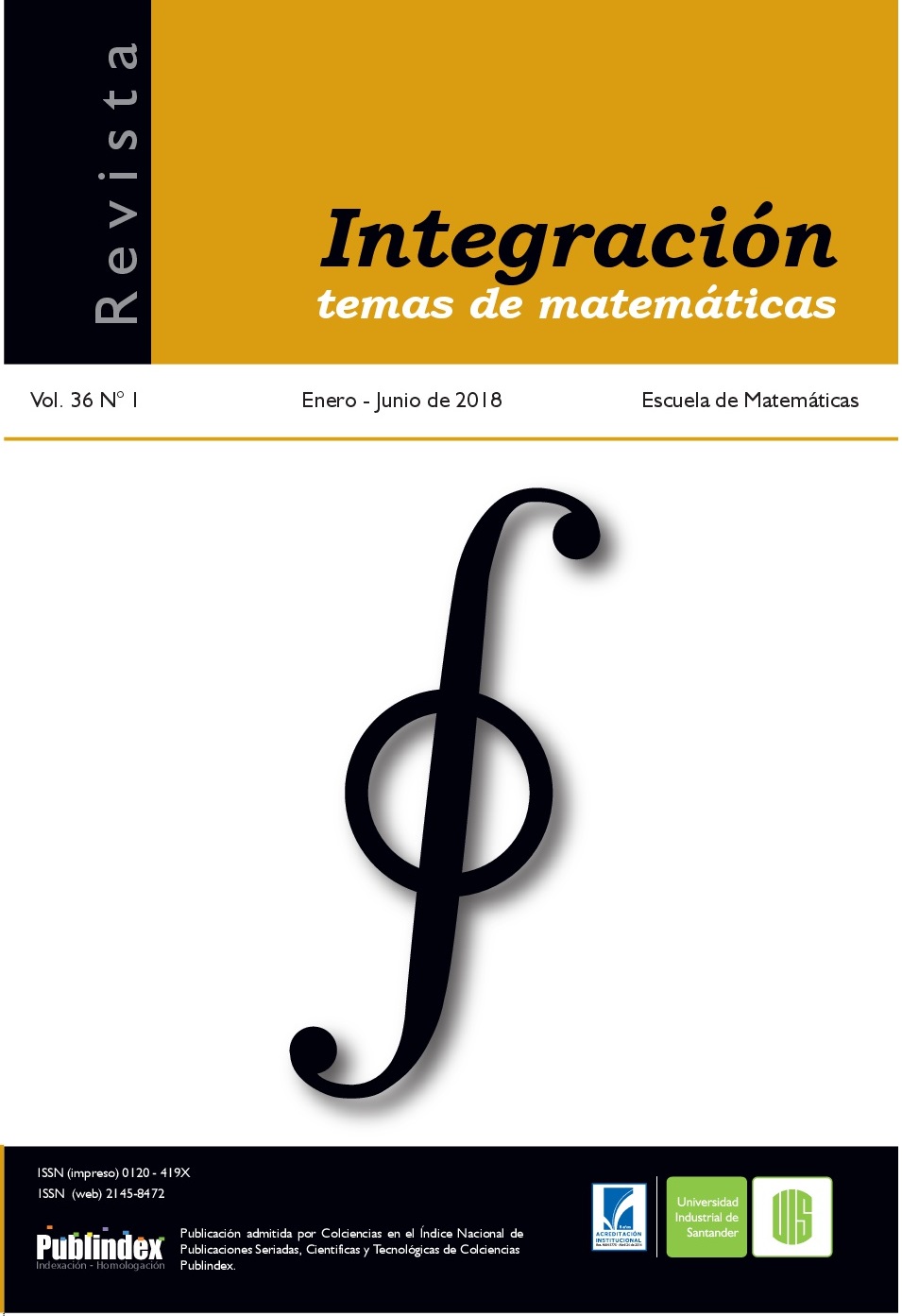Artículos científicos
Existencia de soluciones periódicas para modelos epidemiológicos estacionales con cuarentena
Publicado 2018-07-18
Palabras clave
- Grado de Leray-Schauder,
- modelos SIQS,
- órbitas periódicas,
- número reproductivo básico
Cómo citar
Osuna Castro, C. O., Guerrero Flores, S., & Villavicencio Pulido, G. (2018). Existencia de soluciones periódicas para modelos epidemiológicos estacionales con cuarentena. Revista Integración, Temas De matemáticas, 36(1), 37–47. https://doi.org/10.18273/revint.v36n1-2018003
Resumen
En este trabajo establecemos la existencia de órbitas periódicas para un modelo epidemiológico estacional con cuarentena y tasa de incidencia saturada. Para realizar lo anterior, usamos un esquema variacional basado en
la teoría de grado de Leray-Schauder. También presentamos algunos ejemplos numéricos para ilustrar nuestros resultados analíticos.
Descargas
Referencias
[1] Adnani J., Hattaf K. and Yousfi N., “Stability Analysis of a Stochastic SIR Epidemic Model
with Specific Nonlinear Incidence Rate”, Int. J. Stoch. Anal. (2013), Art. ID 431257, 4 pp.
[2] Capasso V. and Serio G., “A generalisation of the Kermack-McKendrick deterministic epi-
demic model”, Math. Biosci. 42 (1978), 43–61.
[3] Feng Z. and Thieme H. R., “Endemic models with arbitrarily distributed periods of infection
II: Fast disease dynamics and permanent recovery”, SIAM J. Appl. Math 61 (2000), No. 3, 983–1012.
[4] Feng Z. and Thieme H. R., “Recurrent outbreaks of childhood diseases revisited: the impact
of isolation”, Math. Biosci. 128 (1995), 93–130.
[5] Hethcote H., Zhien M. and Shengbing L., “Effects of quarantine in six endemic models for
infectious diseases”, Math. Biosci. 180 (2002), 141–160.
[6] Kar T. and Batabyal A., “Modeling and Analysis of an Epidemic Model with Non-
monotonic Incidence Rate under Treatment”, J. Math. Res. 2 (2010), No. 1, 103–115.
[7] Katriel G., “Existence of periodic solutions for periodically forced SIR model”, J. Math.
Sci. (N.Y.) 201 (2014), No. 3, 335–342.
[8] Liu W., Levin S. and Iwasa Y., “ Influence of nonlinear incidence rates upon the behaviour
of SIRS epidemiological models”, J. Math. Biol. 23 (1986), 187–204.
[9] Liu, W., Hethcote H. and Levin S., “Dynamical behaviour of epidemiological models with
nonlinear incidence rates”, J. Math. Biol. 25 (1987), 359–380.
[10] Shang L., Meng F. and Xinmiao R., “Global threshold dynamics of SIQS epidemic model
in time fluctuating environment”, Int. J. Biomath. 10 (2017), No. 4, 1750060.
[11] Van den Driessche P. andWatmough J., “Reproduction numbers and sub-threshold endemic
equilibria for compartmental models of disease transmission”, Math. Biosci. 180 (2002), 29–48.
[12] Xiao D. and Ruan S., “Global analysis of an epidemic model with non monotone incidence
rate”, Math. Biosci. 208 (2007), 419–429.
with Specific Nonlinear Incidence Rate”, Int. J. Stoch. Anal. (2013), Art. ID 431257, 4 pp.
[2] Capasso V. and Serio G., “A generalisation of the Kermack-McKendrick deterministic epi-
demic model”, Math. Biosci. 42 (1978), 43–61.
[3] Feng Z. and Thieme H. R., “Endemic models with arbitrarily distributed periods of infection
II: Fast disease dynamics and permanent recovery”, SIAM J. Appl. Math 61 (2000), No. 3, 983–1012.
[4] Feng Z. and Thieme H. R., “Recurrent outbreaks of childhood diseases revisited: the impact
of isolation”, Math. Biosci. 128 (1995), 93–130.
[5] Hethcote H., Zhien M. and Shengbing L., “Effects of quarantine in six endemic models for
infectious diseases”, Math. Biosci. 180 (2002), 141–160.
[6] Kar T. and Batabyal A., “Modeling and Analysis of an Epidemic Model with Non-
monotonic Incidence Rate under Treatment”, J. Math. Res. 2 (2010), No. 1, 103–115.
[7] Katriel G., “Existence of periodic solutions for periodically forced SIR model”, J. Math.
Sci. (N.Y.) 201 (2014), No. 3, 335–342.
[8] Liu W., Levin S. and Iwasa Y., “ Influence of nonlinear incidence rates upon the behaviour
of SIRS epidemiological models”, J. Math. Biol. 23 (1986), 187–204.
[9] Liu, W., Hethcote H. and Levin S., “Dynamical behaviour of epidemiological models with
nonlinear incidence rates”, J. Math. Biol. 25 (1987), 359–380.
[10] Shang L., Meng F. and Xinmiao R., “Global threshold dynamics of SIQS epidemic model
in time fluctuating environment”, Int. J. Biomath. 10 (2017), No. 4, 1750060.
[11] Van den Driessche P. andWatmough J., “Reproduction numbers and sub-threshold endemic
equilibria for compartmental models of disease transmission”, Math. Biosci. 180 (2002), 29–48.
[12] Xiao D. and Ruan S., “Global analysis of an epidemic model with non monotone incidence
rate”, Math. Biosci. 208 (2007), 419–429.
